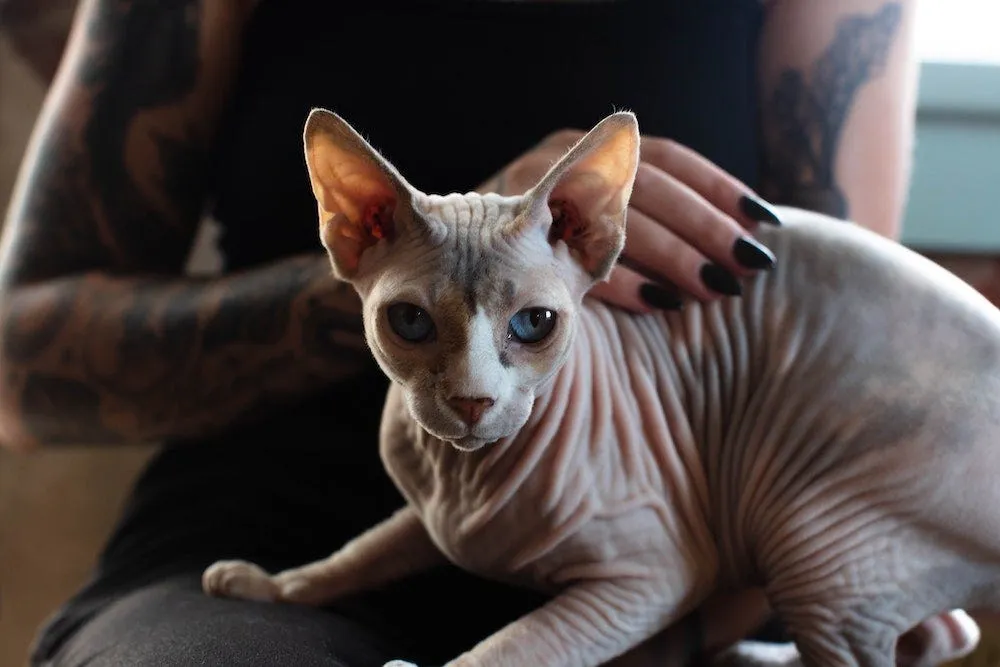Is there anything more heartwarming than a cat’s gentle purr as they nestle into your lap? If you’re searching for the most affectionate cat breeds, these loving felines make ideal companions for anyone craving close bonds and endless snuggles. Not every cat is a lap sitter—some prefer curling up nearby—but these breeds thrive on human interaction, offering devotion that rivals any dog.
Many cat lovers discover that shelter adoptions yield surprisingly cuddly pets. For more on Korean short hair cat traits that might surprise you, check out our guide.
Why Do Cats Love to Cuddle?
Cats’ affinity for cuddling traces back to kittenhood. Young kittens seek warmth, security, and nourishment through close contact with their mothers, kneading to stimulate milk flow—a behavior many retain into adulthood. This explains why your cat might “make biscuits” on your lap, a sign of pure contentment.
Veterinarians from the American Veterinary Medical Association (AVMA) note that this bonding instinct strengthens with positive reinforcement, fostering trust. Domestic cats, descended from social wild felines, often view their humans as family, seeking lap time for comfort, especially in cooler environments.
How to Encourage Your Cat to Become a Lap Cat
While some cats are naturally lap-oriented, others need gentle coaxing. Never force affection, as it can lead to stress, but these expert-backed tips from feline behaviorists can help:
- Create a serene space. Dim lights, minimal noise, and a quiet room reduce anxiety, making your lap more appealing.
- Leverage warmth. Cats’ body temperature preference (around 101.5°F) draws them to heated laps, particularly in winter.
- Use soft fabrics. Drape a fleece blanket over your legs for added coziness—many cats respond instantly.
- Incorporate familiar items. Place their favorite bed or toy on your lap initially to build positive associations.
- Combine with grooming. Brush gently during sessions; the pampering links lap time to pleasure.
- Offer rewards. Treats, catnip, or short play sessions post-cuddle reinforce the habit without overfeeding.
If aggression arises, consult a vet to rule out pain. Resources like our cat hiding from me article can help decode related behaviors.
Top Most Affectionate Cat Breeds
Exploring most affectionate cat breeds? These standouts are renowned for their loving natures, backed by breed standards from the Cat Fanciers’ Association (CFA). We’ve prioritized lap-loving traits, family compatibility, and real-owner experiences.
Shelter Cats
Don’t overlook shelters—they’re treasure troves for affectionate mixed breeds. Millions of “moggies” offer boundless love without pedigree prices. Adoption fees ($50–$200) often cover vaccines and sterilization, per ASPCA data. One owner shared: “My shelter tabby follows me everywhere, purring on command.”
Ragdoll
Ragdolls epitomize floppy affection, going limp when held—like a living teddy bear. Their semi-long fur and blue eyes captivate, but their dog-like devotion shines. They greet family at doors and tolerate kids/pets well. Breeding costs: $400–$2,500. CFA notes their calm demeanor suits apartments.
Siamese
Vocal and vibrant, Siamese cats demand (and give) attention through meows and antics. They’re playful cuddlers, thriving in pairs if alone time is long. Rescue fees are lower; breeders charge $600–$2,000. Owners rave about their “conversational” lap sessions.
Sphynx
Hairless yet huggable, Sphynx cats crave skin contact for warmth, shadowing owners room-to-room. Their “doggy” energy includes chirps and leaps onto laps. High demand means $1,500–$3,000 from breeders. Vet tip: Weekly baths prevent oil buildup, enhancing cuddle time.
Experienced owners recommend supplements like nutra thrive cats amazon for skin health in this breed.
 Sphynx – most affectionate cat breeds
Sphynx – most affectionate cat breeds
Scottish Fold
Sweet and low-maintenance, Scottish Folds’ folded ears belie their plush affection. They curl beside (or on) laps contentedly, adapting to families effortlessly. Rarity pushes prices to $800–$1,500. Health note: Ethical breeders screen for osteochondrodysplasia.
Bombay
Panther-esque Bombays are velvety shadows, sprawling on laps for pets. Social butterflies, they wilt without interaction—ideal with companions. Affordable at $500–$700. Owners describe them as “mini panthers with big hearts.”
 Scottish Fold – most affectionate cat breeds
Scottish Fold – most affectionate cat breeds
Burmese
Playful parents of Bombays, Burmese boast silky coats and sociable souls. They learn tricks and lap-sit eagerly, coloring from sable to champagne. $600–$1,200 range. Their interactivity keeps bonds strong lifelong.
Balinese
Long-haired Siamese cousins, Balinese are vocal lap lovers forming deep household ties. Youthful energy meets cuddle demands. $600–$1,200. Hypoallergenic bonus appeals to allergy sufferers.
Ragamuffin
Ragdoll relatives, Ragamuffins are fluffy affection machines—adaptable, kid-friendly, and lap-devoted. $800–$1,300. They befriend all, demanding pets democratically.
Birman
Sacred-looking Birmans offer quiet devotion, holding steady in arms. Curious explorers return for laps. $600–$1,000. Myanmar legends underscore their gentle legacy.
Other Affectionate Cat Breeds Worth Mentioning
Breeds like Maine Coon show surprising gentleness; see Maine Coon water needs for health. Health-focused care, such as cat giardia treatment, ensures any breed stays snuggly.
When Affection Becomes Excessive
Over-clinginess may signal separation anxiety—pacing, vocalizing, destruction when alone. Vets recommend puzzle toys, routines, or pheromone diffusers. Establish boundaries like no-bed rules to protect sleep. Balanced independence prevents issues; consult professionals if persistent.
In summary, the most affectionate cat breeds deliver joy through purrs and proximity. Prioritize adoption, vet checks, and mutual respect for thriving bonds. Ready for cuddles? Explore shelters or breeders today—your lap awaits its match!
References:
- Cat Fanciers’ Association (CFA) breed standards.
- American Society for the Prevention of Cruelty to Animals (ASPCA) adoption guidelines.
- American Veterinary Medical Association (AVMA) on feline behavior.
Photo credits:
- Sphynx: Erin Agius via Unsplash
- Scottish Fold: Juan Gomez via Unsplash
